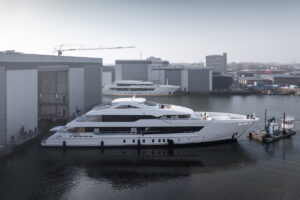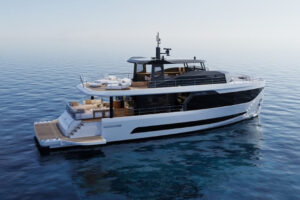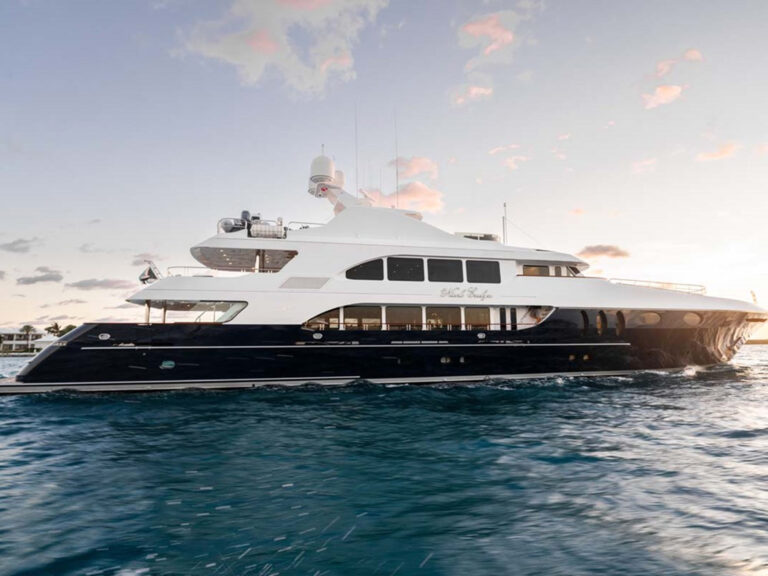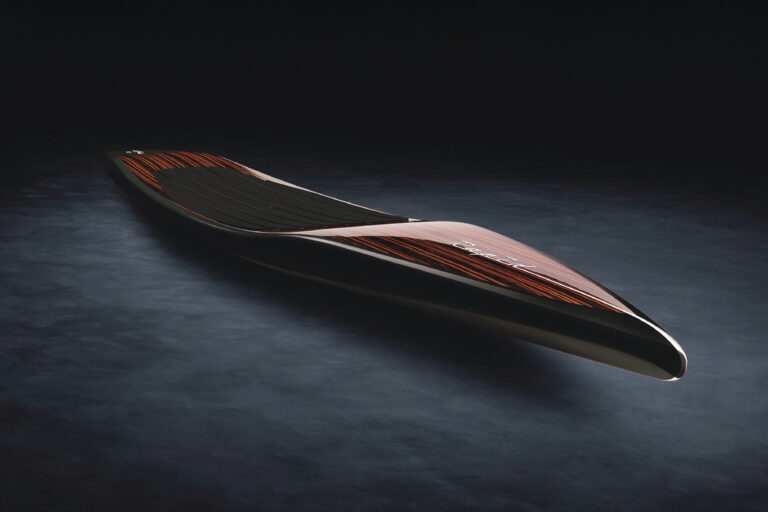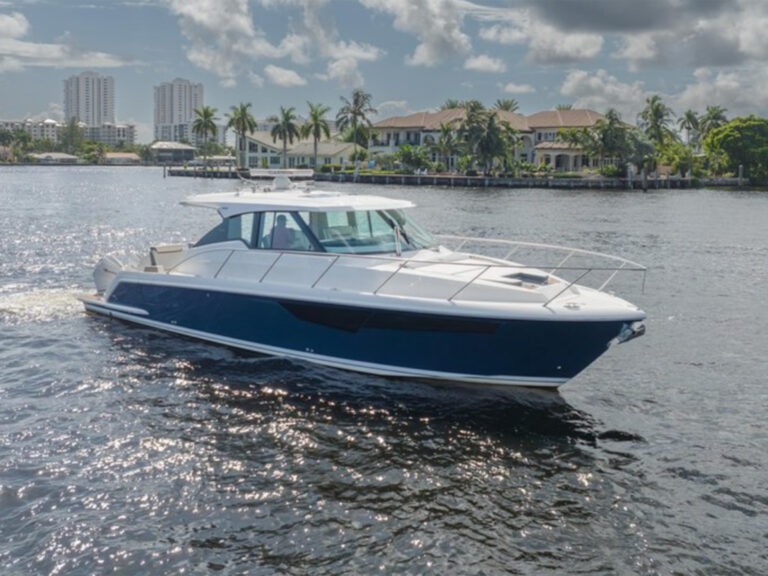Some objects attract us in ways that defy explanation. If someone pressed us for details, we could highlight their appealing features-the extremely lightweight and elegant construction of my Willow Kayaks baidarka or the nimble handling and unadorned lines of my Ducati Monster 620, for example. Notwithstanding the obvious fine qualities of certain objects, the true attraction stems from an emotional response to the whole. This is how the Morris M36 Daysailer hooked me.
In her basic incarnation, this design by Sparkman & Stephens is a paragon of classical good looks, clean lines and honest sailing pleasure. I met hull number one early Saturday afternoon, July 10, 2004, the second day of the Sparkman & Stephens 75th Anniversary celebration at Mystic Seaport, Mystic, Connecticut. Tom Morris and his son, Cuyler, were sailing with prospective buyers on the Mystic River north of the Seaport Museum. As the M36 slipped by the crowd of S&S yachts moored at the bulkhead on the eastern side of the river, I couldn’t help thinking, perfect.
Only now have I realized why the M36 attracted me as strongly as she did. Morris built the first boat to use as a demonstrator. Decks of buff-color nonslip cap her creamy white topsides. A gold cove stripe and teak toe rail accent her sweeping sheer. Teak eyebrows and hand rails on the coachroof, a teak cap on the coaming around the cockpit, and the varnished teak Dorade boxes right forward of the trunk cabin highlight her simple lines and develop her character in the same way that a fine cartoonist establishes personalities via a few well-placed lines and white space.
Jonathan Franzen, writing in The New Yorker about growing up with the characters from Charles Schultz’s “Peanuts” gang, explains that, “It’s precisely the simplicity and universality of cartoon faces that invite us to love them as we love ourselves.” Reading this, I realized that I view a great deal of life’s events and the objects that populate them this way-as cartoons and the simpler, the better. Adding any embellishments to the M36 would distract us (that is, me) from the overall excellence of her design.
On the other hand, folks who don’t see life through the eyes of a cartoonist can have teak cladding on the decks and sides of the trunk cabin. Teak covers the cockpit sole, the seating surface of each cockpit bench and the helmsman’s seat. A hatch in each of these opens onto the spacious lazarette. An icebox hides beneath the bench on the starboard side. In keeping with the daysailing purpose, the benches forward of the helm can accommodate six adults seated or one each prone and soaking up rays or napping.
S&S and Morris continue this theme of spareness in the space belowdecks. They have decorated hull number one in the style attributed to the Herreshoffs, mostly white-trimmed with cherry. When I stepped below, I immediately took a seat on the portside settee/berth, letting my mind wander to an anchorage in a deserted cove, oil lamp glowing and a book riveting my attention. As raindrops tap-danced on the coachroof and decks, I poured a mug of coffee from the thermos and thanked the oil lamp for its warmth.
Any sailor can experience this sort of idyll aboard the M36, because it begs to be taken sailing at the drop of one’s responsibility. Simplicity permeates the operation of the M36, as well as the appearance. All of the sheets and halyards run under the deck to control/winch pods, one each side, right forward of the helm. In standard trim, each control pod contains a single manual self-tailing winch and a battery of three rope clutches. The mainsail sheets to a fitting on the forward side of the steering pedestal, and the tails emerge at the control pods. After you’ve uncovered the mainsail and cast off the mooring, you never have to leave the cockpit.
Lady Luck prevailed the Sunday morning of the S&S celebration. Tom Morris planned to sail the M36 from Mystic to Stonington and invited me to join him. He didn’t have to ask twice. Tom warmed up the 18 hp Yanmar Saildrive auxiliary, and we cast off to join the parade of S&S designs queuing up to wait for the bridges to open. Yes, bridges-one for the railroad and one for the street. I can’t remember which of the two malfunctioned, but the fact remains that a bridge refused to open. Nautical gridlock ensued, so Tom and I milled around with the rest of the yachts-spinning the M36 like a top, backing and filling, holding station like a pilot boat, zigging and zagging like a cabbie in midtown Manhattan. I have never had so much fun under power aboard a sailboat. The M36’s relatively quick and accurate steering, her response to the Saildrive and her ability to carry way took most of the stress out of those trying conditions.
What a delight, then, to see the bridge lift and to head for open water, still a tortuous few miles away. After we cleared the restricted area and freed ourselves from the channel, Tom hoisted sail. I shut down the engine and fell off on starboard tack. Tacktick Master Series solar-powered wireless instruments kept tabs on our speed, tacking angle, speed and direction of the wind, depth and more.
The M36 tacks on a postage stamp, points like a meter boat, reaches like a sport boat (well, almost). Her relatively shallow underbody, large and effective rudder and racy fin keel (with ballast bulb) contribute to her maneuverability and her weatherliness. She exceeded 7 knots at about 30 degrees to the apparent wind. The true wind clocked 12 to 15 knots. When I bore off to a reach, the Tacktick showed better than 8 knots. Although she’s not a featherweight at 7,700 pounds displacement, she’s light enough, and she has a lot of horsepower in the fractional rig. I like sailing to windward, and aboard the M36, short tacking could become addictive. Simply turn the wheel. The blade jib tends itself on a traveler.
Her ability to exceed a speed/length ratio of 1.34 comes from carefully distributed volume below the waterline, which reduces wave-making resistance. Her fine motion comes from concentrating the weight over the center of buoyancy. Empty ends and lightweight carbon spars reduce pitching to a minimum, also contributing to her speed.
Morris Yachts sells the basic boat at $289,000. This includes 12-volt refrigeration, a VHF, the Tacktick instruments, sails, marine toilet and everything else you need to go sailing. Please don’t let my preference for simple unassisted sailing rain on your parade. Anyone who wants to spend more money can order electric winches to help with sail handling, a gennaker and two additional winches for high-powered reaching in light air, and for the ultimate in daysailing luxury, the alcohol stove (one or two burners) for the galley.
You already know which version I’d choose.
Contact: Morris Yachts, (207) 244-5509; www.morrisyachts.com.

